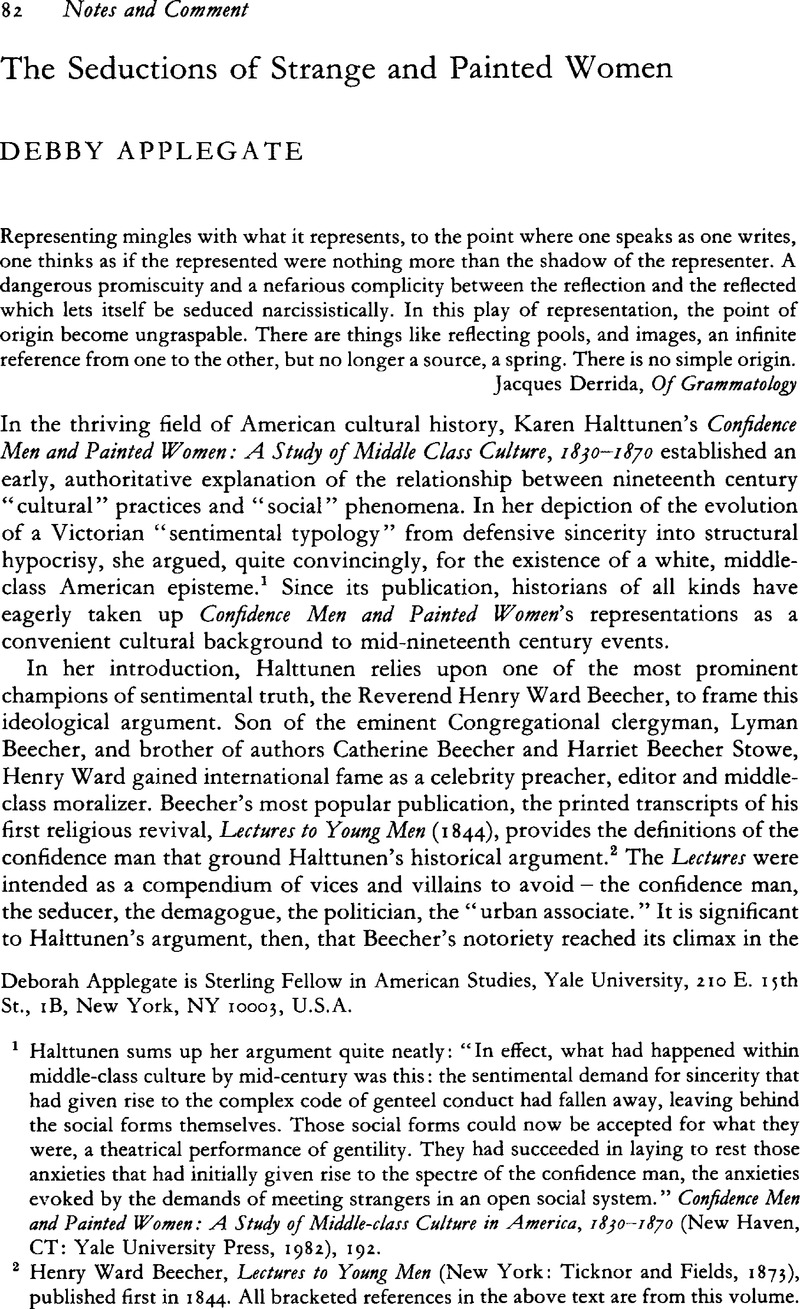No CrossRef data available.
Article contents
The Seductions of Strange and Painted Women
Published online by Cambridge University Press: 16 January 2009
Abstract

- Type
- Notes and Comment
- Information
- Copyright
- Copyright © Cambridge University Press 1993
References
1 Halttunen sums up her argument quite neatly: “In effect, what had happened within middle-class culture by mid-century was this: the sentimental demand for sincerity that had given rise to the complex code of genteel conduct had fallen away, leaving behind the social forms themselves. Those social forms could now be accepted for what they were, a theatrical performance of gentility. They had succeeded in laying to rest those anxieties that had initially given rise to the spectre of the confidence man, the anxieties evoked by the demands of meeting strangers in an open social system.” Confidence Men and Painted Women: A Study of Middle-class Culture in America, 1830–1870 (New Haven, CT: Yale University Press, 1982), 192.Google Scholar
2 Beecher, Henry Ward, Lectures to Young Men (New York: Ticknor and Fields, 1873)Google Scholar, published first in 1844. All bracketed references in the above text are from this volume.
3 Halttunen, , Confidence Men and Painted Women, xvii.Google Scholar
4 Davidson, Cathy, Revolution and the Word, (New York: Oxford University Press, 1986), 224Google Scholar. Freud notes in a well-known essay: “this uncanny is in reality nothing new or alien, but something which is familiar and old established in the mind and which has become alienated from it through the process of repression.” Freud, Sigmund, “The Uncanny,” in The Complete Psychological Works of Sigmund Freud, Vol. XVII, Strachey, James, ed., (London: Basic Books, 1955), 241.Google Scholar
5 Ibid., 224.
6 Ibid., 224.
7 Halttunen, , “Gothic Imagination and Social Reform: The Haunted Houses of Lyman Beecher, Henry Ward Beecher, and Harriet Beecher Stowe,” in Sundquist, Eric J., ed., New Essays on Uncle Tom's Cabin (New York: Cambridge University Press, 1986), 126.Google Scholar
8 Halttunen, , Confidence Men and Painted Women, 186, 188, 189.Google Scholar
9 Ibid., 60.




